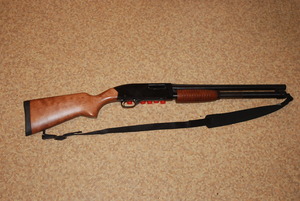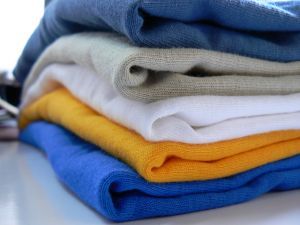No matter what type of shotgun you take into consideration, they all fire some form of a shell for ammunition. Of course, most people have no problem recognizing a shotgun shell. Many people are not aware that there are different ammunition types for shotguns with a wide variety of uses. Sadly, most people believe that everything fired from a shotgun will be lethal, but there are plenty of non-lethal shotgun rounds too. These guns are so versatile when coupled with one of the handful of different rounds available on the market today. Without getting into specific gauges and the mechanisms behind the shells, we’ll take a look at some of the basic shotgun ammunition types.
“Bean Bag” Rounds
Everyone knows about the bean bag shotgun shell. Once fired, a bean bag is propelled from the shell into whatever the target happens to be. These rounds are no joke though because they are extremely painful for humans and animals alike (although they aren’t supposed to be used on animals). Fortunately, these rounds aren’t as lethal as buckshot or slugs, but that all depends upon where they hit a person. If a person is hit on one of their limbs, they can suffer broken and bruised bones, but dead is unlikely. A person shot in the chest or head may not be so lucky, so it is a bad idea to aim for anywhere but the limbs if a non-lethal result is desired. These rounds are common for law enforcement and corrections officers, but civilians can obtain them too.
Buckshot
A shell filled with lead (sometimes non-lead) pellets or balls is considered buckshot. Of course, buckshot is a lethal type of round. It is used for hunting, target shooting, and home security purposes. More than likely, the average person will have shotgun shells filled with buckshot rather than any other ammunition. Buckshot gives the typical spread seen from shotguns with multiple entry points into whatever the target happens to be. Luckily, this type of ammunition is extremely cheap and easy to find.
Concussive Rounds
These rounds are extremely uncommon for the average person to have, but they are available for civilians and are common for law enforcement agencies. Once fired, the shell will travel until it hits someone or something, which is usually the ground. The shell emits a bright flash of light, followed by a small concussive explosion. Obviously, this round is designed to incapacitate another person and it does the job well. These rounds are non-lethal, so they are a nice choice for law enforcement officers.
Door-Breaching
Although movies portray shotguns as being able to blow through door hinges and handles, actually trying to shoot out a door knob would be extremely dangerous. In fact, if you attempt this, then the buckshot or whatever ammo type will ricochet back and can be fatal. The door-breaching round was designed to avoid this problem and allow law enforcement officers to quickly knock down doors without a hassle. Without being too specific, this round contains various items that make up the ammunition. Once the round is expelled from the weapon and hits the door hinge or handle, the ammunition will actually dissolve into a harmless powder. These rounds can be obtained by civilians too, but state laws vary due to the nature of the ammunition.
Slugs
These rounds can be lethal or non-lethal, depending upon what they are made of. Basically, slugs are shotgun shells that expel bullet-like projectiles when they are fired. This allows long-barreled shotguns to essentially become rifles too. Lethal slugs are usually made of lead or another dense material, while non-lethal slugs are usually made of a non-dense material, such as rubber. Of course, non-lethal slugs are used for taking an individual down without killing them, but they have the same dangers as bean-bag rounds. Slugs are used by civilians and law enforcement agencies and have become very common among recreational shooters lately.
Taser
Recently, the Taser company unveiled a new shotgun shell that fires a Taser round. This round is a non-lethal one that fires a number of prongs that latch onto a person or animal. Once these rounds embed themselves into the skin, a 20 second charge of electricity is continuously delivered to the target. This round is well-suited for bring a person down in both an offensive and defensive situation. Obviously, these rounds aren’t cheap, so a person shouldn’t be using them casually. They are non-lethal but can cause lethal injuries if used in various areas of the body.
Shotguns are extremely versatile firearms that fire tons of different shell types. There are plenty of other types of shotgun rounds, but these are some of the most common ones. Luckily, civilians can obtain all of these rounds for the most part. State laws vary, as do the prices of these rounds. The more common ammunition, such as buckshot, can be bought for less than $20 for 25 shells. For recreational purposes, these rounds can be extremely useful for a person. As for law enforcement, they are vital to some non-lethal methods of taking down assailants. Either way, there are so many types of shotgun ammunition that people are unaware of.
Tips for Shotgun Ammunition
– Any ammunition that is marked as “non-lethal” can still kill a human being. For instance, non-lethal slugs are not meant to be fired at someone’s head or chest. Likewise, bean bag rounds are not supposed to be fired at these same areas. Do not fire any non-lethal round at someone’s head. Also, rounds not meant for humans, such as door-breaching rounds, should not be used on humans.
– Not every type of ammunition is legal in every state, so you should check your local and state laws to determine if you can legally purchase a certain type of shotgun round in your state or city. Failure to do so may result in a good amount of legal trouble, so don’t purchase special shotgun ammunition without the proper background information.


